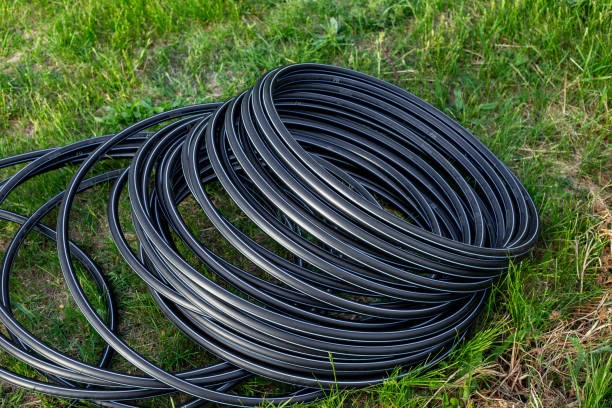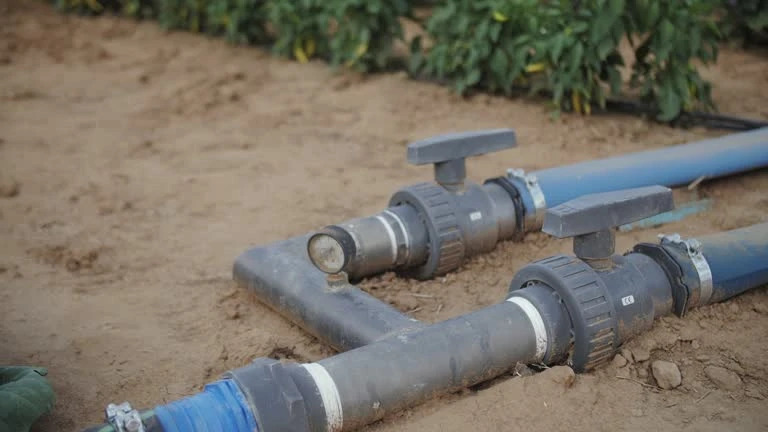Introduction
PE 100 HDPE pipes represent the pinnacle of polyethylene piping technology, offering exceptional performance for modern water supply systems. As utilities and engineers seek more reliable infrastructure solutions, understanding what makes PE 100 special becomes crucial. This article explains the fundamentals of PE 100 material and explores its significant advantages for water distribution networks.
What is PE 100?
PE 100 is the highest grade of high-density polyethylene (HDPE) material specifically engineered for pressure pipe applications. The “100” designation indicates its Minimum Required Strength (MRS) rating of 10 MPa (100 bar) when tested at 20°C over a 50-year service period. This classification means PE 100 offers superior performance compared to older PE 80 and PE 63 grades.
The advanced molecular structure of PE 100 provides several key advantages:
- Enhanced resistance to slow crack growth
- Superior stress crack resistance
- Higher density and crystallinity
- Improved mechanical properties
- Greater pressure capacity with thinner walls
Key Benefits for Water Supply Systems
1. Exceptional Hydraulic Performance
PE 100 pipes feature an ultra-smooth interior surface that minimizes friction loss, maintaining excellent flow characteristics throughout their service life. This hydraulic efficiency often allows engineers to specify smaller diameter pipes while achieving equivalent flow rates to larger traditional pipes.
2. Unmatched Durability
These pipes demonstrate remarkable resistance to corrosion, chemical attack, and environmental stress cracking. Their flexibility allows them to withstand ground movement and seismic activity better than rigid piping materials. PE 100 maintains excellent impact resistance even in freezing temperatures.
3. Leak-Free Reliability
The heat fusion joining process creates monolithic connections that are fundamentally leak-proof. Unlike mechanical joints in traditional systems, fused PE 100 joints eliminate potential leakage points, significantly reducing water loss that commonly plagues older distribution networks.
4. Long-Term Cost Savings
While the initial material cost may be slightly higher than alternatives, PE 100 systems offer substantial lifecycle savings. The combination of lower installation costs (due to lightweight materials), minimal maintenance requirements, and extended service life (50+ years) results in excellent long-term value.
5. Environmental Advantages
PE 100 pipes are non-toxic and certified safe for potable water applications. Their manufacturing process consumes less energy than metal pipe production, and the material remains fully recyclable at the end of its service life. The leak-free nature also helps conserve water resources.
Applications in Modern Water Infrastructure
PE 100 pipes have become the material of choice for numerous water supply applications. Municipalities use them extensively in primary distribution networks and service connections. Their flexibility makes them ideal for rural water projects and agricultural irrigation systems. Industrial facilities value their chemical resistance for process water transport, while fire protection systems benefit from their reliability.

Installation Advantages
The material properties of PE 100 enable innovative installation methods that reduce project timelines and community disruption. Their flexibility allows for trenchless installation techniques like directional drilling and pipe bursting. Unlike metal pipes, they can be installed in contaminated soils without risk of corrosion. The fusion joining process creates stronger, more reliable connections than traditional mechanical joints.
Conclusion
PE 100 HDPE pipes represent a significant advancement in water infrastructure technology. By combining superior material properties with practical installation advantages, they offer water utilities a reliable, long-lasting solution that addresses many challenges of traditional piping materials. As communities worldwide seek to upgrade aging water systems, PE 100 continues to emerge as the material of choice for sustainable, efficient water distribution networks.
FAQs About PE 100 HDPE Pipes
1. Is PE 100 safe for drinking water applications?
Absolutely. PE 100 meets all international potable water standards and doesn’t leach harmful substances, making it completely safe for drinking water systems.
2. How does PE 100 compare to traditional PVC pipes?
PE 100 offers superior impact resistance, better flexibility, and more reliable leak-proof joints compared to PVC systems. It also performs better in cold temperatures.
3. What pressure ratings can PE 100 pipes achieve?
While capacity varies by pipe dimensions, PE 100 systems typically handle working pressures up to 25 bar, with some configurations capable of higher pressures.
4. Are PE 100 pipes environmentally friendly?
Yes. They’re fully recyclable, energy-efficient to manufacture, and their leak-free design helps conserve water resources throughout their service life.
5. What’s the expected service life of PE 100 piping?
When properly installed and operated within design parameters, PE 100 systems regularly exceed 50 years of reliable service with minimal maintenance.


















